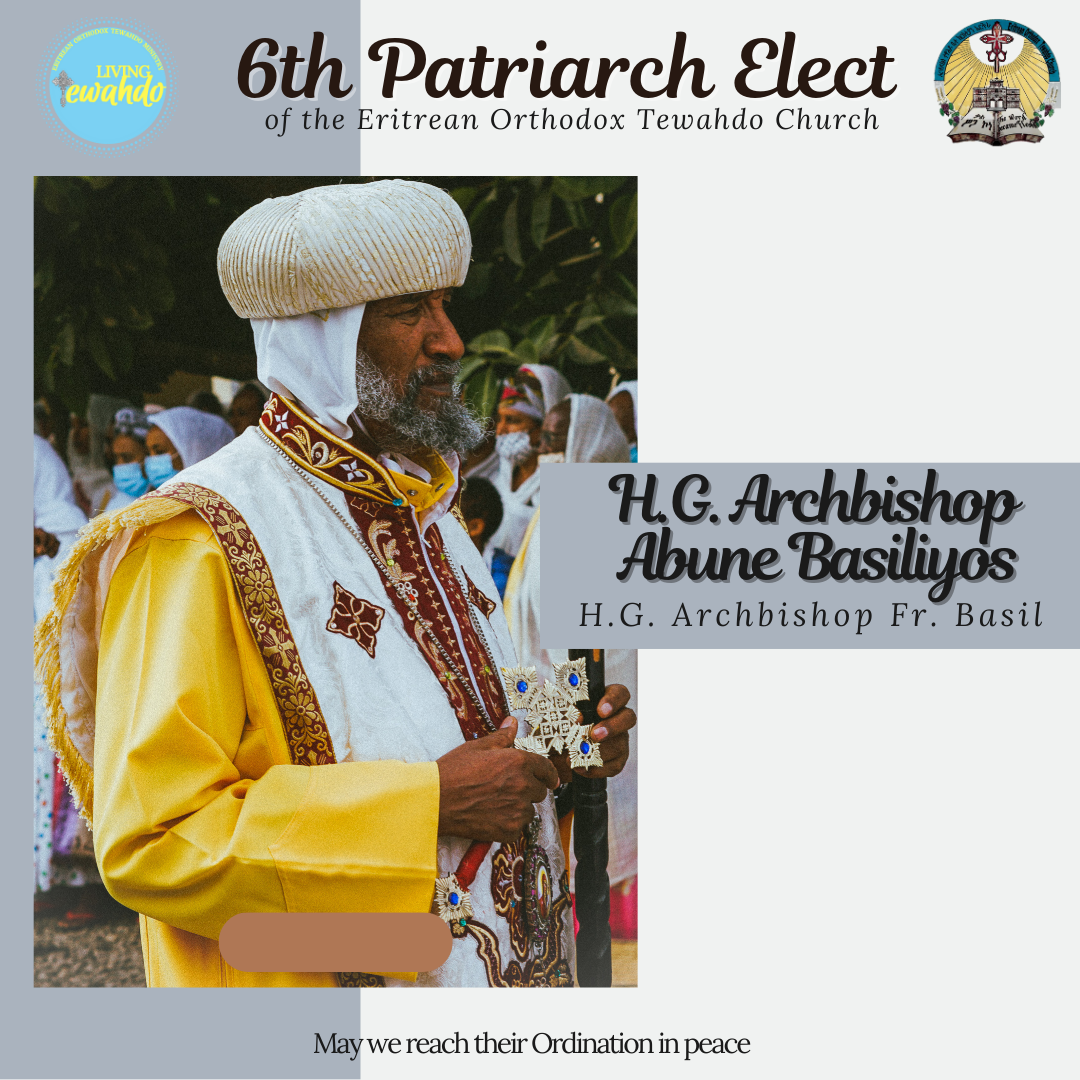Five Pillars of Mystery
The Eritrean Orthodox Church has Five Pillars of Mysteries through which it teaches and demonstrates its basic religious belief. They are called Pillars of Mystery due to the fact that they support and strengthen the faithful in religious teachings as a pillar supports a roof. These mysteries have Biblical foundation (l Cor. 14:19). Accordingly, the five pillars of mystery are expressed in the Orthodox Tewahdo Creed, which is the confession of our faith. The five mysteries of the church are as follows:
- The mystery of the Trinity
- The mystery of the Incarnation
- The mystery of Baptism
- The mystery of Communion
- The mystery of Resurrection
Mystery of the Holy Communion
The Mystery of the Holy Communion is a supreme act of life through which we can hold intimate communion with God and that which makes us one with God. “Verily, verily, I say unto you, except ye eat the flesh of the Son of Man, and drink his blood; ye have no life in you." "Who so eateth my flesh, and drinketh my blood hath eternal life. My flesh is meat indeed, and my blood is drink indeed, for it is a real food. He that eateth my flesh, and drinketh my blood, dweleth in me, and I in him." (John. 6:53-57).
There are prophecies and symbols given about the Holy Communion:
- Prophecy
--- “Thou has put gladness in my heart, more than in the time that their com and their wine has increased' (Ps. 4, 7).
--- "Wisdom has builded her house, she has hewn out her seven pillars. She has killed her beasts; she hath mingled her wine; she hath also furnished her table; she hath sent forth her maidens: she crieth up on the highest place of the city" (Prov. 9: 1-3).
---"The prime needs of human beings for living are water, wheat... and juice of grape". (Sirach 39:26).
These prophecies were foretold about Jesus Christ, the Lamb of Passover, who was crucified on the cross as to give His flesh and blood in the form of bread and wine.
- Symbol
When the children of Israel were liberated from the bondage and went out of Egypt, they were told to kill a lamb, eat the flesh, take the blood and sprinkle it on the two side posts and on the upper door post of the houses, in order to get security from the plague of the firstborn. This was applied as a symbol of Jesus Christ the Son of God, who was crucified and gave his flesh and blood as a ransom to the children of men. "This is the lamb of God, who takes away the sin of the world." (Jn.l:29). Melchizedek, who is the archetype of the priesthood of Jesus Christ, the Son of God, offered a sacrifice in the form of bread and wine. (Gen.l4:18).
To fulfill these prophecies and symbols our Lord and savior Jesus Christ on Thursday evening at the Passover took the bread, blessed it, broke it and gave it to His disciples and said, this bread which I give you is my flesh. In the same manner He took the cup, blessed it and gave it to his disciples, saying' 'this is my blood which will be shed for you and for many people, for the new covenant, for the remission of sin. (Mt. 26,28; Mk. 14:22; Lk. 22: 19). This mystery is always performed in the Eritrean Orthodox Tweahedo Church. When the priest puts bread on a paten and the wine in a chalice and blesses them with the liturgical prayer, the bread and the wine are changed into the real flesh and blood of the Son of God. This was made clear by the scholar St. Athanasius - when he said “we believe that the read and the wine are bread and wine before they are blessed by the priest, but after they are blessed by the priest the bread and the wine are changed to the real flesh and blood of the Son of God”. (Ath. Faith of the Father Ch.28 Part 14 Verse 22).
Therefore, the Holy Communion which the disciples received on Thursday evening, that which was crucified on the cross on Friday, and that which is being practiced at every comer to the end of the world is one and the same. The Eritrean Orthodox Church believes and. teaches, that the flesh and blood is not simply a memorial or symbolic but real flesh and blood of the Son of God. The pure sacrifice that the clergy offers is the same sacrifice that was given up on the cross on Calvary. (Jn. Chr. Liturgy 85).
Reference:
-The Holy Bible
-Faith of the Fathers by Father Athanasius
-Lithurgy by John Chrysostom

